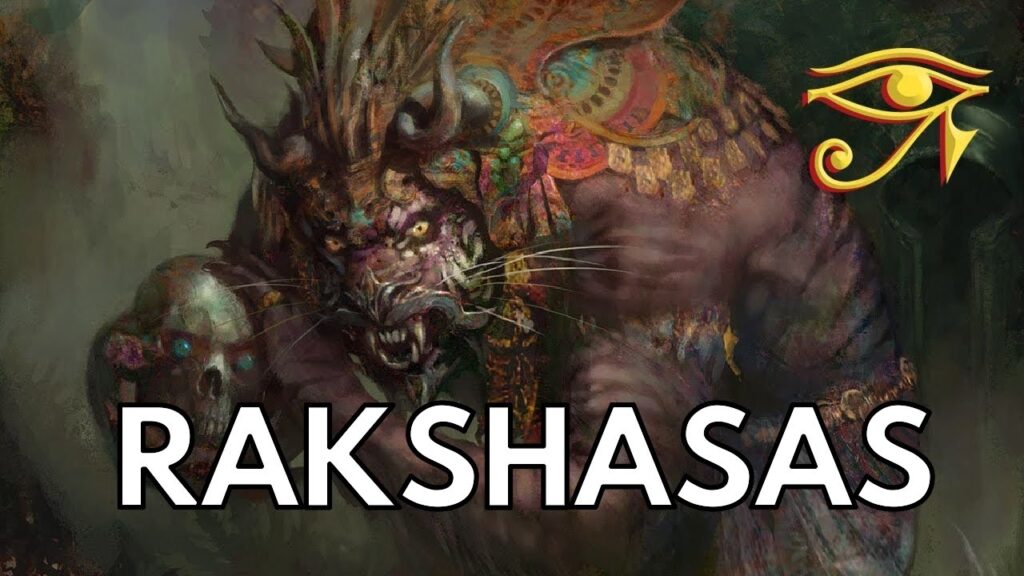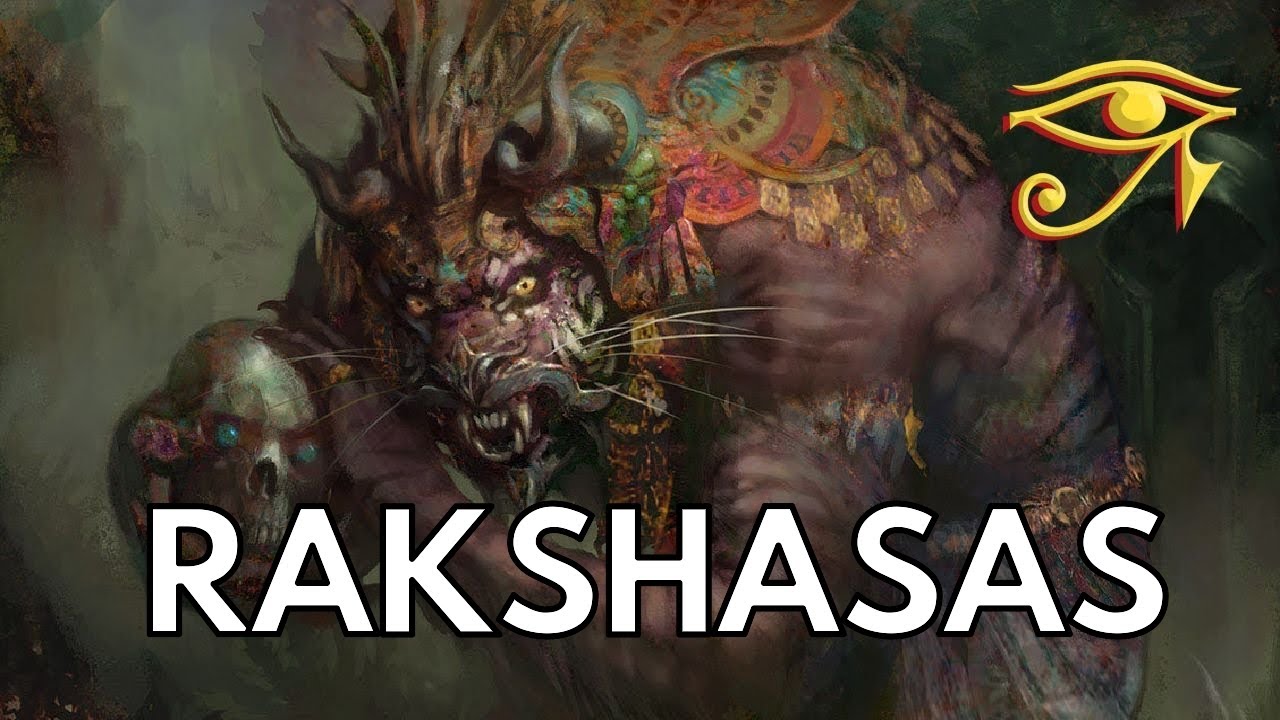
Unveiling the Rakshasa Myth: Origins, Symbolism, and Cultural Impact
The Rakshasa myth is a pervasive element in Hindu, Buddhist, and Jain mythologies, particularly prominent in the Indian subcontinent and Southeast Asia. These supernatural beings, often depicted as malevolent and powerful, hold a significant place in the cultural narratives and religious beliefs of these regions. Understanding the origins, symbolism, and cultural impact of the Rakshasa myth provides valuable insight into the complex tapestry of South Asian folklore.
Origins of the Rakshasa
The earliest mentions of Rakshasas can be traced back to the Vedic period in ancient India (c. 1500–500 BCE). In the Rigveda, one of the oldest Hindu scriptures, Rakshasas are portrayed as demonic entities who disrupt sacrifices, harass priests, and spread chaos. These early descriptions establish them as adversaries of the gods and upholders of dharma (righteousness). The Atharvaveda, another Vedic text, contains spells and incantations aimed at warding off Rakshasas, highlighting the fear and aversion they inspired.
Over time, the portrayal of Rakshasas evolved. In the epic poems, the Ramayana and the Mahabharata, they become more complex characters, with distinct personalities, motivations, and even kingdoms. Ravana, the ten-headed king of Lanka in the Ramayana, is perhaps the most famous Rakshasa. While depicted as an antagonist, Ravana is also portrayed as a learned scholar, a skilled warrior, and a devoted devotee of Shiva, adding layers of complexity to his character. [See also: The Significance of Ravana in Hindu Mythology]
Physical Attributes and Symbolism
Rakshasas are typically depicted as having monstrous and grotesque appearances. Their physical attributes often include sharp teeth, claws, fiery eyes, and a fearsome countenance. These features are symbolic of their malevolent nature and their association with darkness and chaos. The monstrous form serves as a visual representation of their inner corruption and their opposition to the forces of good. However, some Rakshasas are also capable of shapeshifting, allowing them to disguise themselves and deceive their victims.
The symbolism of Rakshasas extends beyond their physical appearance. They often represent the darker aspects of human nature, such as greed, lust, anger, and violence. Their presence in mythology serves as a cautionary tale, reminding people to control their negative impulses and strive for righteousness. The battle between gods and Rakshasas can be interpreted as a metaphor for the internal struggle between good and evil within individuals.
Cultural Impact and Representations
The Rakshasa myth has had a profound impact on the cultures of South and Southeast Asia. Rakshasas appear in various forms of art, literature, and performance, reflecting their enduring presence in the collective imagination. In traditional Hindu and Buddhist art, Rakshasas are often depicted as guardians or protectors of sacred spaces, despite their fearsome appearance. This paradoxical role highlights the complex and multifaceted nature of these beings.
Rakshasas in Literature
In literature, Rakshasas play a significant role in shaping narratives and conveying moral lessons. The Ramayana, with its detailed portrayal of Ravana and his Rakshasa army, is a prime example. The Mahabharata also features numerous encounters with Rakshasas, often serving as tests of the heroes’ courage and righteousness. Folk tales and regional stories across India and Southeast Asia continue to feature Rakshasas, adapting the myth to local contexts and cultural nuances.
Rakshasas in Art and Performance
The visual representation of Rakshasas varies across different regions and artistic traditions. In some depictions, they are portrayed as grotesque and terrifying figures, while in others, they are given a more refined and stylized appearance. Traditional dance forms, such as Kathakali in Kerala, often feature characters dressed as Rakshasas, enacting scenes from the epics. Masks and costumes play a crucial role in conveying the power and ferocity of these beings.
Rakshasas in Modern Media
The Rakshasa myth continues to be relevant in modern media, appearing in films, television shows, and video games. These contemporary adaptations often reimagine Rakshasas in new and creative ways, exploring their potential for both good and evil. Some modern interpretations portray Rakshasas as misunderstood beings, challenging traditional notions of good and evil. [See also: The Evolution of Mythological Creatures in Modern Cinema]
Examples of Prominent Rakshasas
Several Rakshasas have achieved particular prominence in Hindu mythology:
- Ravana: The ten-headed king of Lanka, known for his power, intellect, and devotion to Shiva. He is a central figure in the Ramayana.
- Hiranyakashipu: A powerful Rakshasa king who challenged the authority of Vishnu. He was eventually defeated by Vishnu in his Narasimha avatar (half-man, half-lion).
- Kumbhakarna: Ravana’s brother, known for his immense size and his ability to sleep for extended periods.
- Surpanakha: Ravana’s sister, whose attempted seduction of Rama led to the events of the Ramayana.
- Tataka: A female Rakshasa who terrorized the forests. She was slain by Rama during his youth.
The Rakshasa’s Enduring Appeal
The enduring appeal of the Rakshasa myth lies in its ability to explore fundamental themes of good and evil, order and chaos, and the struggle between the divine and the demonic. Rakshasas serve as a reminder of the potential for darkness within individuals and the importance of upholding righteousness. Their presence in mythology enriches our understanding of human nature and the complexities of the human experience. The stories surrounding Rakshasas offer valuable lessons about morality, justice, and the consequences of unchecked power.
Rakshasas and Dharma
The conflict between Rakshasas and the forces of Dharma is a recurring theme in Hindu mythology. Dharma represents righteousness, moral order, and the natural law of the universe. Rakshasas, in their pursuit of power and self-gratification, often violate Dharma, leading to their downfall. The stories of Rakshasas serve as cautionary tales, emphasizing the importance of adhering to Dharma and the consequences of straying from the path of righteousness. The ultimate defeat of Rakshasas by the gods or heroes symbolizes the triumph of good over evil and the restoration of cosmic balance.
Variations Across Cultures
While the Rakshasa myth is primarily associated with Hindu mythology, similar beings exist in other cultures and religions. In Buddhism, for example, there are figures analogous to Rakshasas who are often depicted as guardians or protectors of sacred sites. In Southeast Asian folklore, similar demonic entities appear with variations in their names and characteristics. These cultural variations reflect the diverse ways in which different societies have interpreted and adapted the myth to suit their own beliefs and values. The core concept of a malevolent, supernatural being remains consistent, but the specific details and attributes may vary significantly.
Conclusion
The Rakshasa myth is a rich and complex element of South Asian folklore, offering valuable insights into the cultural values, religious beliefs, and artistic traditions of the region. From their origins in the Vedic period to their continued presence in modern media, Rakshasas have captured the imagination of people for centuries. Their monstrous appearance, their association with darkness and chaos, and their role as adversaries of the gods make them a powerful symbol of the darker aspects of human nature. By understanding the origins, symbolism, and cultural impact of the Rakshasa myth, we can gain a deeper appreciation for the rich tapestry of South Asian mythology and its enduring relevance in the modern world. The legends of Rakshasas continue to resonate, reminding us of the ongoing struggle between good and evil and the importance of striving for righteousness. The Rakshasa is a figure that embodies both fear and fascination, a testament to the power of mythology to explore the complexities of the human condition.

